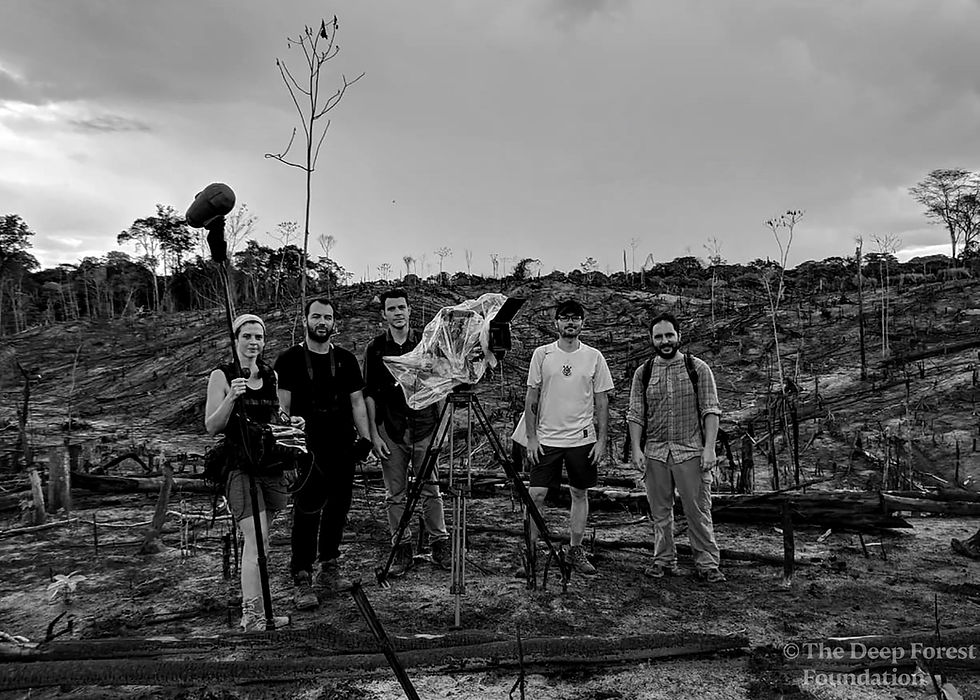#ActForAmazon- a call to take care of our planet
- Rich D'Amaru
- Aug 29, 2019
- 4 min read
Marilena Altenfelder-PhD in Applied Ecology, University of São Paulo
In August 2005, I was in Rio Branco, in the state of Acre, in the Brazilian Amazon during the dry season. I woke up and thought I was in London. But it wasn't fog, so common in the British capital. It was the burning Amazon. Now, August 2019, fourteen years later, the news that the Amazon is burning more than usual has aroused worldwide commotion, with warnings and pronouncements from various world leaders pressuring Brazil and calling for a solution to contain the fires. This is more than understandable in a context of climate crisis and emergency, which affects everyone. It seems that we recognize that we live on the same planet.
That is, not everyone recognizes the global effects of our current way of life. Living harmoniously and sustainably with landscapes, ecosystems, and biodiversity still seems a less interesting alternative for some individuals and groups more interested in exploiting resources for “development”. Currently in Brazil, the search for “development” attempts to change the land use in the Amazon, converting landscapes to deforested areas, most of these usufruct of traditional communities.
As a result we have the current scenario where loggers cut down trees and burn the land to prepare for grazing or agriculture, mainly soybean, maize and cotton production, leading to conflicts and deaths. This unsustainable practice is encouraged by the proposal to open protected areas (Indigenous Lands and Conservation Units) for commercial use, as Brazil's President Jair Bolsonaro advocates.
This way of inhabiting the land, guided by the ideals of private land occupation, illegal forest exploitation and economic development, is strongly encouraged in the political discourse of the President of Brazil. In April, Bolsonaro cut 24% in the annual budget of the Brazilian environmental inspection agency and reduced the number of fines for illegal deforestation. He continues to advocate changing the percentages of an area that should be preserved in rural properties in the Amazon region. In addition, the Brazilian president cancelled the real-time deforestation mapping program conducted by a reputable institute, INPE.
This current Brazilian political direction culminated in the cancellation of funds from Germany and Norway to the Amazon Fund, one of the most important initiatives for forest conservation and protection. But the Amazon continues burning and according to NASA, the US space agency, 2019 has been the worst year of burning in the Brazilian Amazon since 2010.

International media are reporting and commenting on the fires: Steffen Seibert, representative of German Prime Minister Angela Merkel, said: "The magnitude of the fires is worrying and threatens not only Brazil and the other affected countries, but the whole world". UN Secretary-General Antonio Guterres said he was deeply concerned about forest fires in the Amazon rainforest. He stressed that we can no longer afford damage to one of the largest sources of biodiversity.
It is good to remember that the Amazon and tropical forests store from 90 billion to 140 billion metric tons of carbon, helping to stabilize the climate worldwide. The Amazon rainforest alone represents 10% of all biomass on the planet. That is the reason for this major concern when satellite image analysis show that Brazil recorded an 83% increase in burnings, between January and 19th of August 2019, compared to the same period of 2018, with more than 72 thousand fire outbreaks.
Ipam (Institute for Environmental Research of the Amazon), an important non-governmental organization, issued a technical note[1] showing that, in general, the municipalities where most burnings occurred were also the most deforested and where large farmers are concentrated. The study found no relationship between the absence of rainfall and the burn outbreaks, which could suggest spontaneous causes for the events.
In this developmental model we are moving towards resource depletion and global warming. “Saving the Amazon” (and saving humanity) will require, among other things, rethinking lifestyle and consumption habits; encouraging public policies that seek environmental sustainability; rethinking the consumption of red meat and demand from the government that these products have a certificate of origin and production. Furthermore, we need the teachings of the indigenous peoples from the forest! Those who have been living with and from the forest for so many years, who have made and make the forest what it is, which is not an empty forest as many still imagine. We need to move from our colonial forms and listen to what these peoples are saying and doing. We have a lot to learn. As says Eduard Viveiros de Castro, an important Brazilian anthropologist, these peoples are not in the past, but will be our future.
I finish with a warning and a call from one of the participants of the Yarang Women's Movement, called Melobô Ikpeng of the Ikpeng ethnic group of the Xingu Indigenous Territory (MT), who works collecting seeds for the restoration of forests in the Xingu and Araguaia River basins: “This is why we always say to White people: don't clear the forest because the forest is our relatives; The forest is all of us”.





Comments